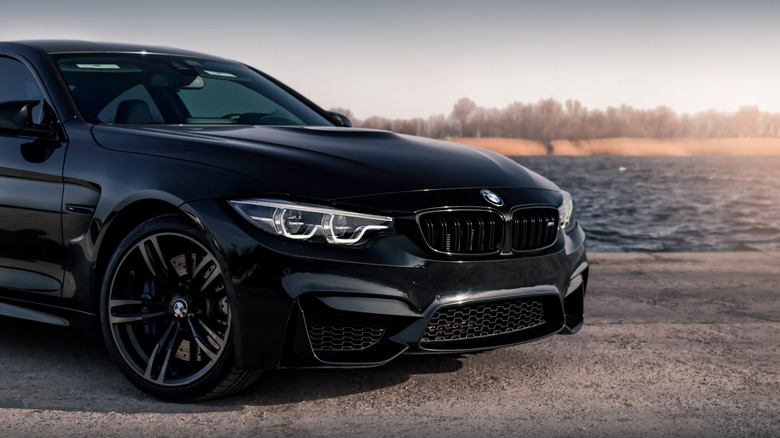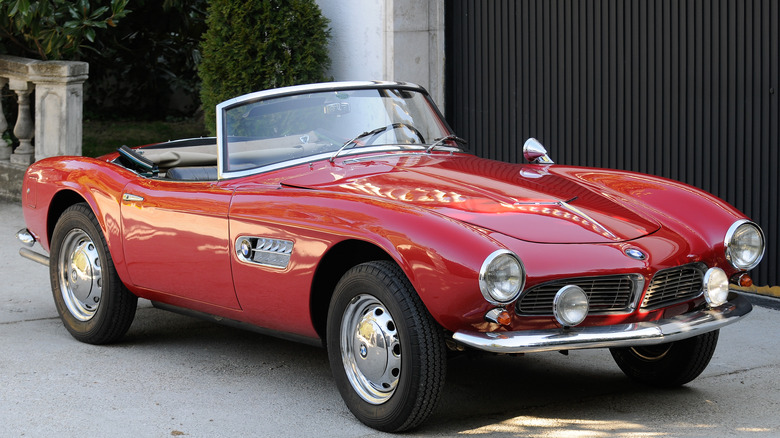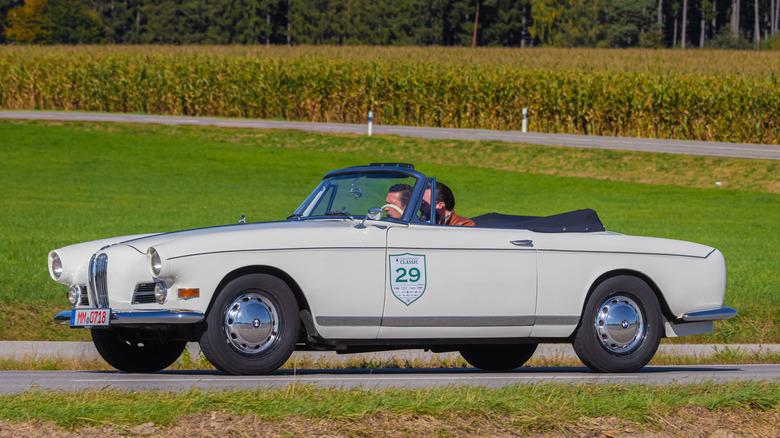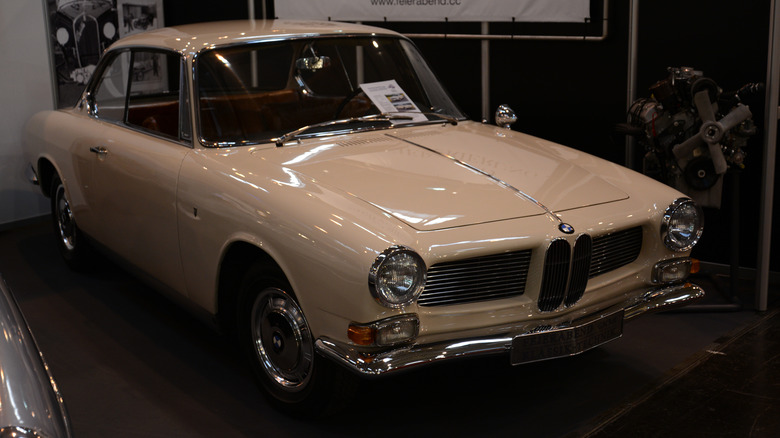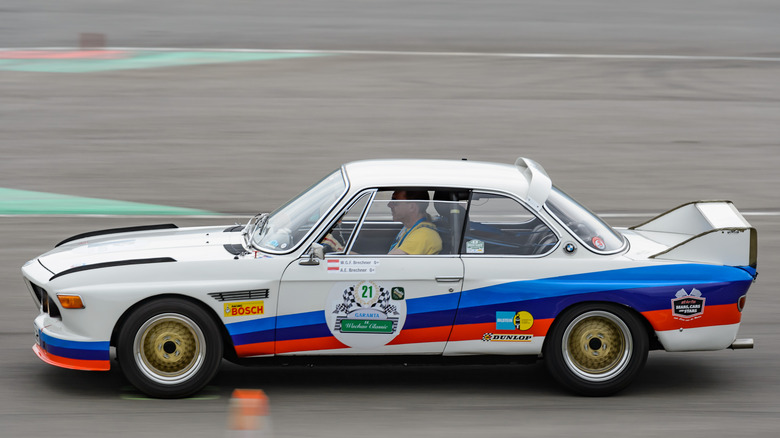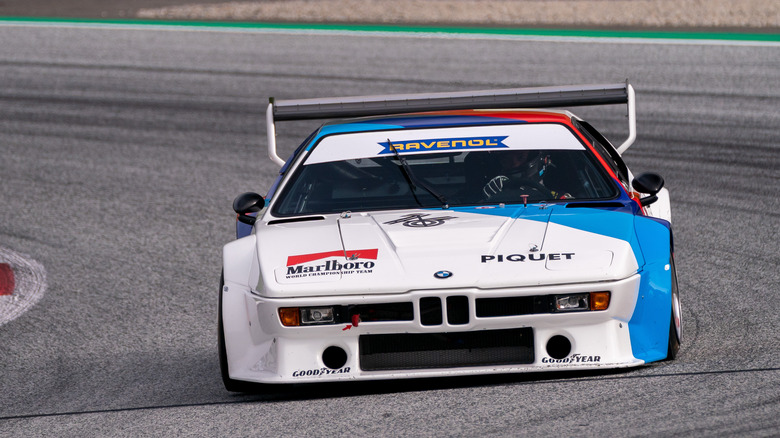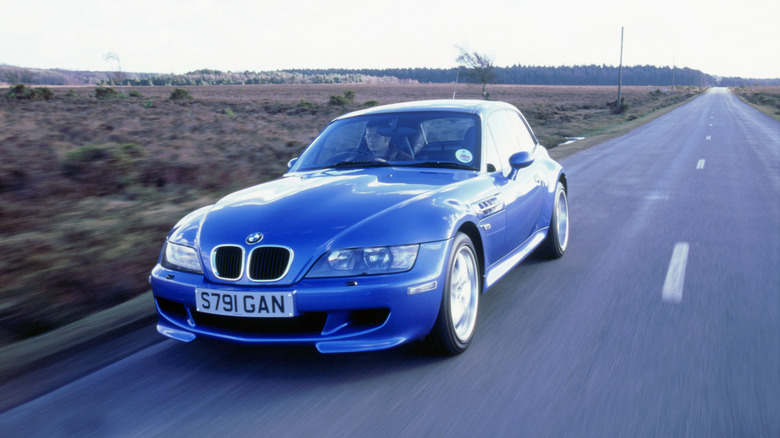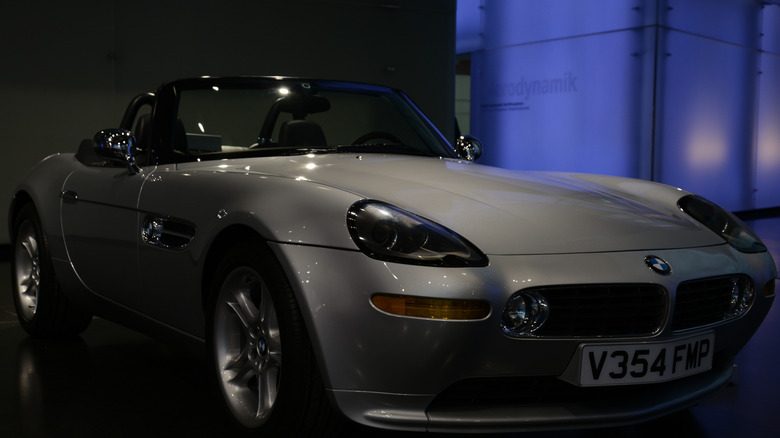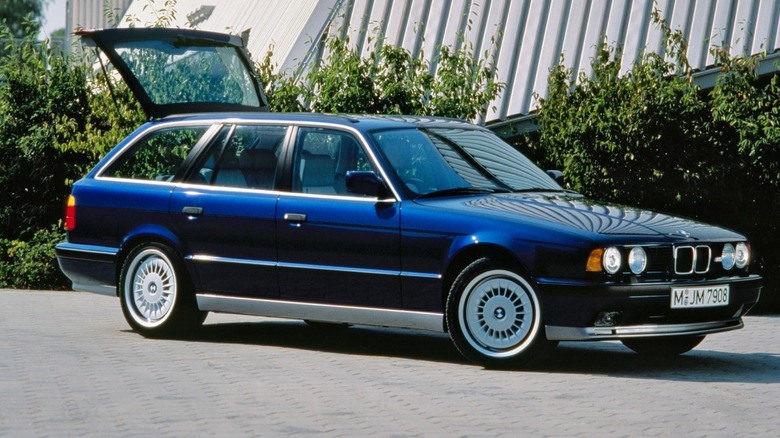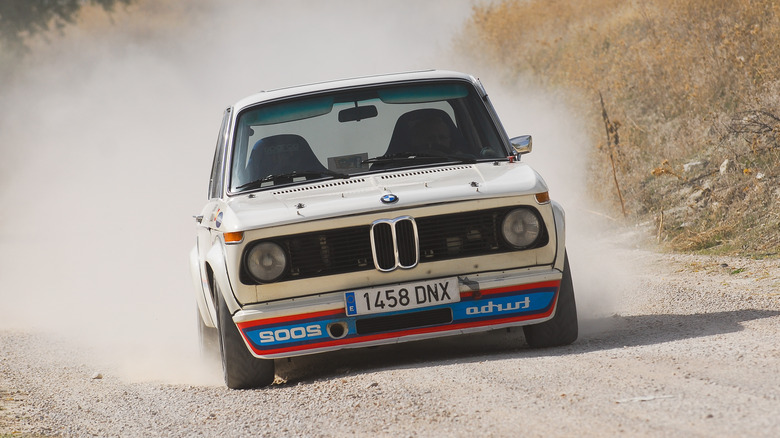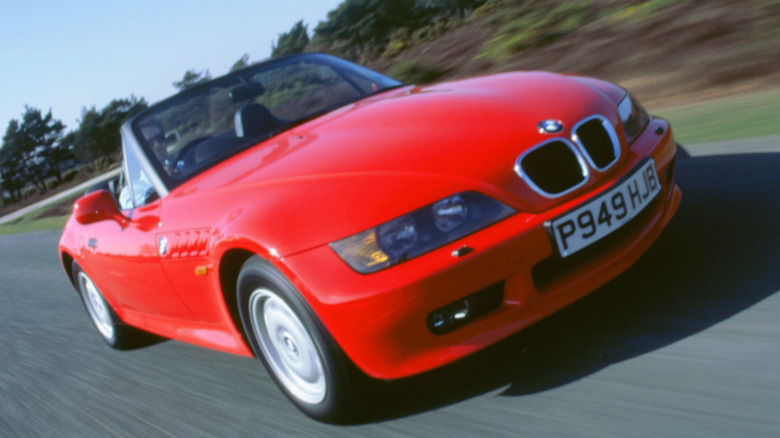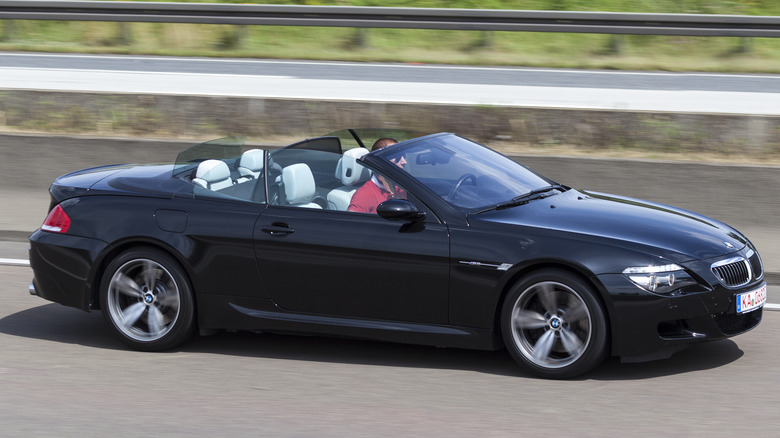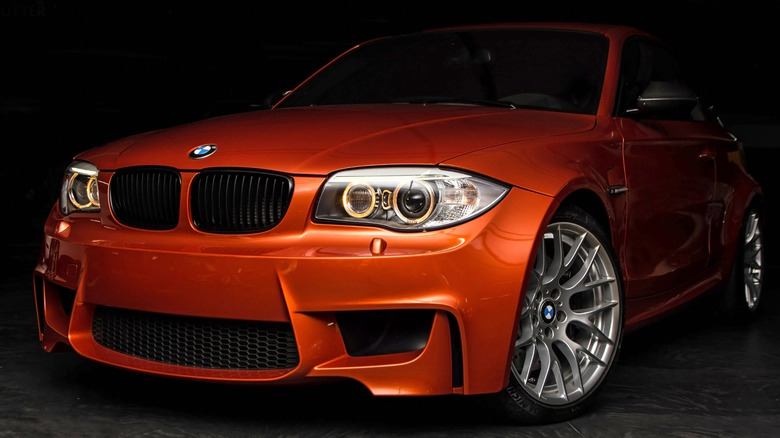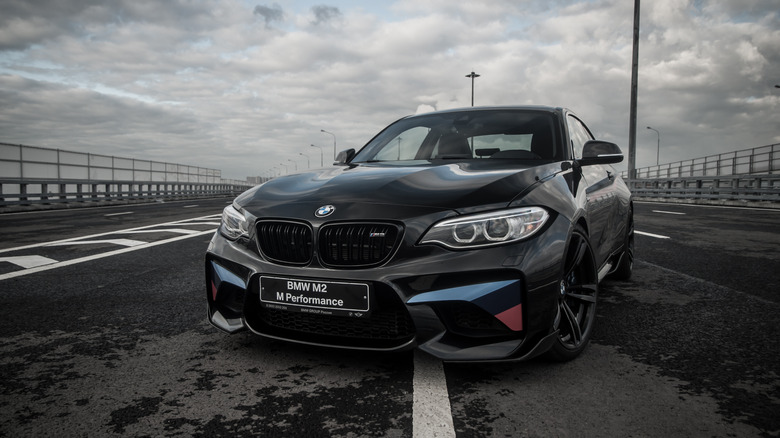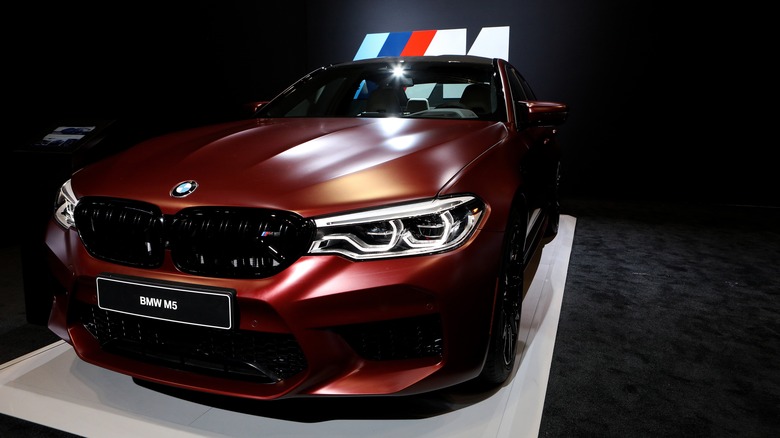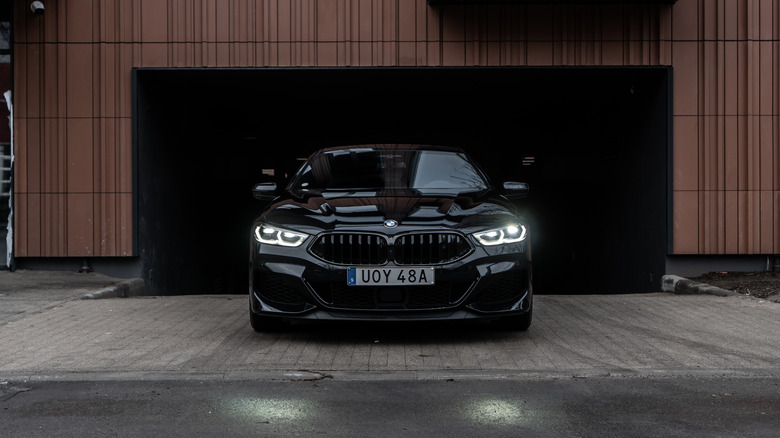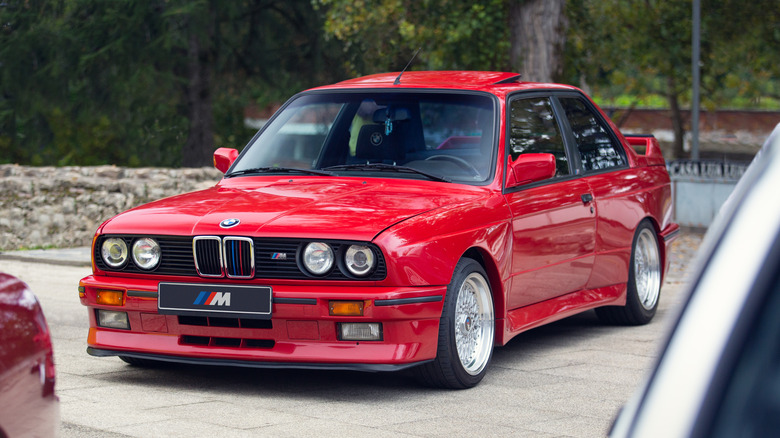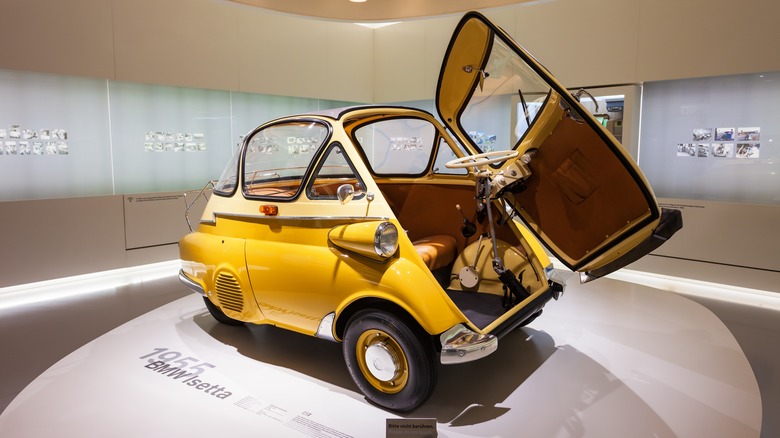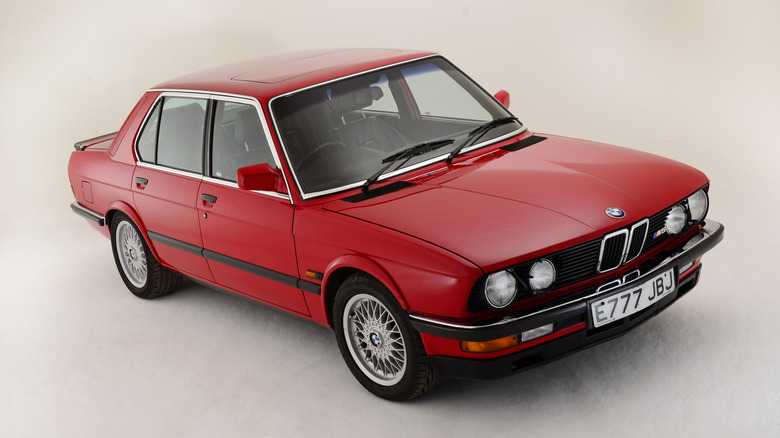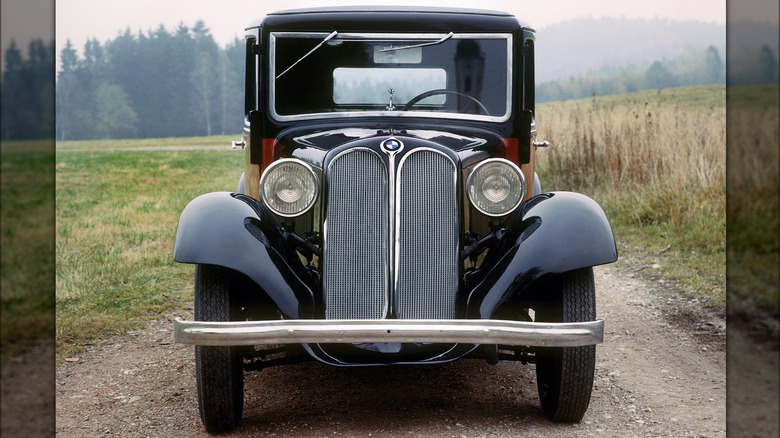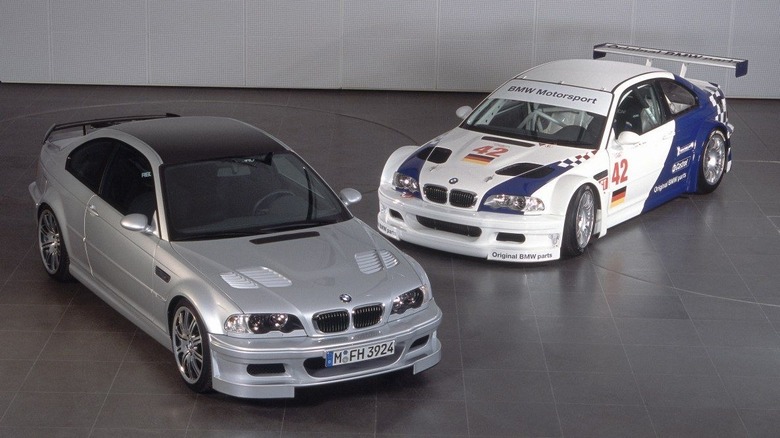The 20 Best BMWs Ever Designed
Regarded as one of the leading manufacturers of luxury and high-performance cars in the contemporary world, BMW has a history that dates back over 100 years. The German auto brand was founded in 1916 and initially produced aircraft engines used in World War I. Soon after the war ended, the company swiftly worked its way up to become an auto manufacturer with its first-ever motorcycle, the BMW R 32, produced in 1923.
Eventually, by 1952, BMW established its roots in the field of car production and launched the 501, a luxury sedan that marked the beginning of BMW's journey in the automobile industry. The company started to expand its range of vehicles and quickly gained the respect of drivers around the world. Since then, the German brand has produced a long list of cars that became widely famous and set benchmarks for other competitors in the industry. To sum everything up, here are the best 20 BMWs of all time.
1955 BMW 507
Introduced to American drivers in 1955, the BMW 507 was a roadster based on the company's previous 501 and 503 models (via MotorTrend). The car made its debut at the Waldorf-Astoria hotel in New York City and even before it landed in the U.S., it already carried a massive reputation of being the "most beautiful car in the world." Munich's dream car was developed with the aim to compete against the highly regarded Mercedes-Benz 300SL. The frontman behind the 507 was Max Hoffman, a New York-based luxury car dealer who influenced the development of a European sports car especially tailored for American buyers.
The 507 was packed with a 3.2-liter, V8 engine that produced 150 horsepower. It had a top speed of 122 miles per hour (mph) and could accelerate from 0 to 60 mph in 11.1 seconds. This was a perfect car in every sense. It was built and assembled by the best technicians in Bavaria and was loaded with best-in-class materials. Due to this, the cost of production of each unit came close to a whopping $10,000, almost double its projected cost price.
BMW incurred a loss on each unit it produced and in 1960, the model was pulled out of the brand's lineup, MotorTrend notes. Although the car couldn't survive in the market, it now collects above $1 million from buyers. Fun fact: a 1957 BMW 507 sold for $5,040,500, making it the most expensive BMW ever sold.
1956 BMW 503 Cabriolet
Designed by Albrecht von Goertz, the BMW 503 was a luxury two-door Grand Tourer that was developed alongside the 507 roadster. With the aim to establish the German brand as a luxury automaker in the American market, the 503 was unveiled at the Frankfurt Motor Show as a car that delivered both power and comfort (via TopSpeed).
The 503 was the most desirable BMW in its era and that was because of its "ahead of the time" design, TopSpeed notes. It boasted a vertical, slim two-piece grille that was flanked by two other horizontal grilles that were smaller in size. Large, round-shaped headlights fitted into rounded fenders that enhanced the car's front look. A thin bumper completely made of chrome was placed at the front. The hood of the car had a slight slope towards the rear, which gave the car its aerodynamic look.
Talking about power, the BMW 503 ditched the old-school 2.0-liter, six-cylinder engine and packed a 3.2-liter V8 instead. The motor produced 140 horsepower. Flat out, the car could reach 60 mph in 12.8 seconds and could attain a top speed of 118 mph, TopSpeed notes. The German marque hoped the model would add to the company's sales in the post-war era, but it again ended up incurring heavy losses. Finally, in 1959, BMW stopped its production. A total of just 413 units were produced throughout, available in both coupe and convertible variants.
1962 BMW 3200 CS
Introduced at the Frankfurt Motor Show in 1961, the BMW 3200 CS marked the end of an era for the German company (via Google Arts & Culture). It was the final model based on the brand's luxury platform in the early post-war era that started with the 501 in the 50s. The sports tourer was manufactured from January 1962 to September 1965, and 603 units were produced in total. The two-door coupe had a beautiful design that showcased an Italian flair, something that was quite prevalent at the time. It was designed by Italian automobile company Bertone, based in Turin, Italy. The two-door coupe boasted the then famous vertical slim grille with a horizontally-shaped grille at each side. Large, round BMW headlights made their way to the model and were fitted into rounded fenders. From the sides, the 3200 CS carried a clean and elegant look.
Interestingly, TopSpeed notes that it was the first-ever BMW to feature the Hofmeister Kink — an automotive design element that consisted of a forward-angle made at the base of the C-pillar of cars. The BMW lineup especially carried the element and it soon became associated with the German giant. The rear end of the 3200 CS had two circular-shaped taillights that were encompassed with circular patches of chrome. The car was powered by a 3.2-liter, V8 engine that was further mated with a four-speed manual transmission. The 3200 CS had a top speed of 124 mph and could do 0 to 60 mph in 8.9 seconds.
1973 BMW 3.0 CSL
The most powerful CS ever made, the BMW 3.0 CSL, was the track version of the already-existing coupe series under the name of BMW E9. The first car from the E9 series was the 2800 CS, carrying a 2,788-cc engine that peaked at 6,000 revolutions-per-minute (rpm) and produced 168 horsepower. The second coupe from the series was the 3.0 CS, introduced in 1971. It equipped a 2,986-cc engine that pumped out 180 horsepower at 6,000 rpm. While these cars were more about comfort, BMW introduced the star in the lineup — the 3.0 CSL — to fill the vacuum of a designated sports car.
According to Ultimate Specs, the CSL sported a 3,153-cc engine that could produce a whopping 206 horsepower and reach a top speed of 137 mph. While the engine remained one of the key reasons behind this success, the build of the car, with lightweight materials, remained the most significant factor for its impressive performance. In fact, the "L" from CSL stood for "Lightweight."
BMW efficiently used aluminum to make the doors, bonnet, and boot lid of the car. Even the chassis was built with thinner sheets of metal to reduce the overall weight of the car. Result: an outstanding power to weight ratio of 6.1 kg/hp. Apart from its unmatched performance, the most intriguing feature of the car was the specially-shaped rear spoiler, which gave the car the nickname — "Batmobile" (via BMW)
1978 BMW M1
Regarded as one of the most iconic BMWs ever produced according to CarBuzz, the M1 was an excellent machine, both for the road and tracks. It carried the powerful character of a sportscar and contributed immensely to BMW's racing journey. Interestingly, it was the first BMW to wear the 'M' badge and all the 460 copies ever produced from 1978 to 1981 were hand-built (via Hot Cars). This makes the M1 one of the rarest BMWs of all time.
With a 3.5-liter, straight-six motor stuffed under the hood, the M1 produced 277 ponies and 243 lb-ft of torque output at 5,000 rpm (via Ultimate Specs). The engine was paired with a Kugelfishcer-Bosch mechanical fuel injection system, which allowed the car to reach a top speed of 162 mph. Realizing M1's potential, BMW's racing division created a racing version of the car known as the M1 Procar. The latter was a designated sports car exclusively designed for the world championships and the M1 Procar Racing Series.
For this, the designers tweaked the body of the street-ready M1 and integrated a big-rear spoiler, prominent mudguards, and redesigned front bumpers. The six-cylinder engine was further developed by BMW M engineers in accordance with the Group 5 Racing Regulations and the results were outstanding — an 850 horsepower engine that could reach a maximum speed of 192 mph. The BMW M1 Procar was not a commercial hit, though it became one of the most iconic BMWs in the racing world (via BMW).
1998 BMW M Coupe
The BMW M Coupe was the high-performance variant of the Z3 coupe produced by BMW's racing division, BMW Motorsport (via Car and Driver). All the units of the M Coupé were manufactured and assembled in BMW's Spartanburg plant in the US, although parts like the engine and transmission system were imported directly from Germany, according to Hatch Heaven. The car was developed under the leadership of BMW's lead engineer Burkhard Göschel.
The team had to keep the cost of production as low as possible and therefore, the M coupe shared a majority of its bodywork with the Z3 coupe, Hot Cars points out. Although, no compromises were made to the power-producing unit of the car, and the quad-exhaust tips under the rear bumper were a clear indication of that. Initially, the M coupe was offered with a 3.2-liter, straight-six high-revving engine designed by BMW M. The engine, also known as S52 had a power output of 321 horsepower at 7,000 rpm, and it took only 5.4 seconds for the car to reach 60 mph.
The top speed of the car was electronically limited to 155 mph, showing the potential power of what could have been. In 2001, the company upgraded the engine to S54 which was rated at 321 hp and produced 261 lb-ft of torque (via BMW).
1999 BMW Z8
Developed with the codename 'E52' from 2002 to 2003, the BMW Z8 was a two-door roadster co-designed by Henrik Fisker and Scott Lempert. Originally, the Z8 was designed to celebrate the BMW 507 from the 50s, TopSpeed notes. Several prototype models were produced between 1996 and 1999, and one concept was previewed at the Tokyo Motor Show under the name Z07. The successful response and overwhelming popularity amongst BMW enthusiasts led to the commercial development of the Z8. The car was even featured in the James Bond movie "The World Is Not Enough," released in 1999.
Talking about its performance, a 5.0-liter, V8 engine could pump out 400 horsepower at 6,600 rpm, TopSpeed notes. The engine, designed by BMW Motorsport, was internally known as the "S62" and was placed right behind the front axle, providing the Z8 with a 50/50 weight distribution. BMW Z8 could reach a top speed of 180 mph, although an electronic speed limiter kicked in at 155 mph.
An acceleration time of 4.7 seconds was claimed by the company, though the U.S.-based automobile magazine Motor Trend found the time to be 4.2 seconds. Car and Driver tested the car thoroughly and found that the car's benchmark scores had outperformed the highly regarded Ferrari 360 Moderna, especially in terms of acceleration, braking, and handling. About 5,700 units of BMW Z8 were produced between 2000-2003, out of which half were shipped to the U.S.
BMW M5 Touring
Released in 1992, the BMW M5 touring was essentially a sports car wearing the body of a comfortable and luxurious tourer. The car was a perfect representation of a stunning sedan, a comfortable wagon, and a powerful sports car, all blended together (via BMW-M). The aim of the designers was to present a highly comfortable vehicle with characteristics such as a spacious interior and a ton of boot space and combine all of this with the sportiness of a BMW M car. The race-based technology of the car was sourced from the M5 sedan with minimal changes.
The M5 Touring was assembled mostly by hand at the BMW M plant in Munich (via BMWM Registry). Interestingly, it was the last series of BMW cars to be assembled manually. Coming to the thrilling nature of the M5 Touring, the five-seater wagon equipped a 3.8-liter straight-six DOHC petrol engine that could produce 340 horsepower at 6,900 rpm, according to Carfolio.
The engine was the best-in-class. Even today it could be regarded as a great six-cylinder motor. It took only 5.9 seconds for the M5 Touring to reach 60 mph and it could go up to 155 mph (electronically limited). Interestingly, only 891 units ever left the production facility, making the M5 Touring the rarest of its kind.
BMW 2002
The BMW 2002 is a vintage car that dates back to the 1960s (via Road and Track). Widely regarded as one of the best-looking BMWs of all time, the BMW 2002 wore a clean and elegant design. The slim chrome bumpers, shiny paint job, and compact shape won the hearts of many. The round headlights and the small vertical front grilles added more character to the design. Although, the car was significantly underpowered considering the nature of BMWs. Initially, the 2002 had a 2.0-liter engine which was good enough to produce 100 horsepower with a single carburetor (via Silodrome).
The most significant update that 2002 ever got was the Turbo addition. It was introduced in 1974 and was the "bad boy" in the lineup. For this variant, BMW turbocharged the 2.0-liter engine which boosted the ponies to 170 and produced 181 lb-ft of torque output, significantly more than the original 2002. The 2002 Turbo was also given a visual revamp. The front bumper was replaced by air intakes and the body was painted with the classic BMW tricolor shade of dark blue, light blue, and red to bring out the sporty character. Before the existence of BMW M, the 2002 Turbo was a renowned go-to sports car and to this date, it remains one of the most in-demand vintage vehicles.
BMW Z3
Successor of the limited production car BMW Z1, the Z3 has been a symbolic model for the Bavarian brand ever since its debut in 1996 (via BMW Akron). The two-seater open-top car has played a significant role in establishing the Z family in BMW's lineup. Built on the heritage of the 503 roadster, the Z3 wears a classic silhouette from the 50s which was molded in a dynamic and timeless design. The letter Z stands for "Zukunft" which means "futuristic" in German and undoubtedly, Z3 was ahead of its time.
The structure of the car followed the classic BMW recipe for roadsters: a long bonnet, slanted windshield, and a driver's seating position pushed back to the rear. Designed by Joji Nagashima, the sportscar was also available in a two-door coupe model. At that time, the automotive market lacked the existence of attractive and high-riding cars (like SUVs these days) and the Z3 helped the brand to fill the vacuum with its gorgeous design and a sporty driving experience.
Close to 300,000 units were produced in total, making it the first Z series car to be mass manufactured. According to MotorTrend, the initial Z3 offered a 4-cylinder M43B18 engine that was rated at 114 horsepower and 124 lb-ft of torque output but eventually got its engine upgraded to a six-cylinder M52TUB20. The M variants of BMW Z3 which were later introduced in 1999 packed a straight-six S50 motor that produced 316 horsepower and 258 lb-ft of peak torque output.
BMW M6 Cabrio
Introduced first in 2012, the M6 Cabrio was the second-generation performance version of BMW's 6 series (via Auto Evolution). Around that time, a list of high-performing convertibles was incomplete without a BMW, and the M6 Cabrio served as the ideal representative for the Bavarians. The car was a great blend of looks and power and stood right in the middle of a sportscar and a roadster. It featured an aggressive stance at the front that distinguished the M6 convertible from the rest of the 6 series.
The M-package included a chrome-worked kidney grille, "M" badging on the front fenders, and a quad-exhaust setup. 20-inch wheels were a standard part of the deal along with enlarged fenders and a pronounced front bumper, notes Auto Evolution. The inside was filled with leather upholstery and high-quality materials, increasing the car's luxury. Since it was a high-performance sports car, bolstered seats were installed at the front to help the driver and co-passenger to maintain their seating position at steep turns.
Although, the real magic of the BMW M6 cabriolet is underneath the hood. The car equipped a 4.4-liter twin-turbo V8 engine with direct fuel injection. The system altogether could pump out 560 horsepower while producing a peak torque of 500 lb-ft. The power from the engine was enough to offer a top speed of 155 mph, although an additional M-driver's package was available that boosted its top speed to a whopping 190 mph.
2011 BMW 1M Coupé
Not many cars have the potential to set a benchmark in the world of high-performance cars soon after their launch. However, the 2011 BMW 1M Coupe was no ordinary car. This compact-sized coupe that was light in weight and carried the power of a BMW M won the hearts of many car enthusiasts. On top of it, the car was a rear-wheel-drive machine paired with a manual transmission system — a combination that hardcore auto lovers live for. The results were outstanding: 6,331 units sold from a single year of production, according to Stratstone. Although BMW initially planned to manufacture only 2,700 units of the 1M Coupé, the cap was removed due to its overwhelming response.
The 1 series M coupe was significantly different from the rest of BMW's 1 series, both in terms of design as well as power. The former sported the typical 'M' elements on the body such as the signature wing mirrors and a prominent front bumper. For the first time in a production car, air-intakes were used to improve the aerodynamics of the vehicle. The back of the car featured a rear spoiler that was subtly integrated into the boot lid and quad-exhaust tips, highlighting the sporty nature of the car. A 3.0-liter straight-six motor was installed on the 1 M Coupe. It packs 340 horsepower at 5,900 rpm and delivers 330 lb-ft of peak torque output. Flat-out, the car can reach 62 mph in just 4.9 seconds (via Ultimate Specs).
2016 BMW M2
The BMW M2 is the high-performance variant of the 2 series lineup that was introduced in the market in 2014 (via Motor Trend). Both the 1 series and 1 M series were replaced by BMW's 2 series, making M2 the entry-level variant in BMW's M lineup. The world saw the car for the first time in the famous video game "Need For Speed: No Limits" in 2015, a year before it got into the market. For the buyers, the car was introduced at the North American International Auto Show.
The M2 was made for delivering uncompromised performance and undoubtedly, it stood up to the mark. The two-door rear-wheel-drive coupe sported a 3.0-liter turbocharged inline-6 engine that produced 365 hp at 6500 rpm and 343 lb-ft of peak torque. The 2016 M2 equipped with a manual transmission system can accelerate from 0-62 mph in just 4.5 seconds (via Car and Driver). With the dual-clutch automatic transmission, the number falls down by .2 seconds. Top speed of the car is electronically limited to 155 mph, but those who want that extra thrill can opt for the optional driver's package which boosts the top speed to 168 mph.
2018 BMW M5
One of the most uncompromising cars in BMW's lineup, the 2018 M5 is a luxury sports sedan that carries the reputation of the "Ultimate Driving Machine" quite seriously. Undoubtedly, it is the best make offered by the German brand's high-performance lineup that demonstrates the traits of a business sedan fused with insane power and ultimate tech. Known as F90 in BMW's generation terms, the model is the first in its family to have the "M xDrive" all-wheel-drive mode as standard, providing the ultimate torque distribution to each wheel and efficiently putting its horsepower to great use in diverse terrains. Although, the hardcore auto enthusiasts who want the thrilling wheelspin experience can switch to the fully rear-wheel-drive mode with the M dynamic buttons. This mode offers a pure track experience — screeching tires, drifting, burnouts, you name it. BMW recommends unleashing this mode only on designated tracks and closed circuits.
Talking about its unmatched performance, the BMW M5 equips a 4.4-liter, twin-turbo V8 engine that produces that monstrous 600 horsepower and 553 lb-ft of peak torque output. The ridiculous acceleration of the M5 pushes you hard against the seat and takes just 3.2 seconds to reach 60 mph from a standstill. Yet, the 2018 BMW M5 is not only about the performance but also offers the executive experience of a luxury sedan with its dynamic exterior and best-in-class interior.
BMW M8 Gran Coupe
Undoubtedly the most aggressive-looking sedan in BMW's performance lineup, the M8 Gran Coupe is the four-door coupé variant of the high-performance 8 series. Unlike its sister variants which are only offered in two-door models, the M8 Gran Coupe is a more practical pick given the longer wheelbase and no compromise on power. Designers from the German giant have worked ambitiously to make the range-topping variant the ultimate car in the lineup and they did it exceptionally well (via Car and Driver). Talking about the design of the M8 Gran Coupe, the exterior of the sports sedan speaks aggression from each angle. Be it the bumper at the front with massive air-intakes for the high-performance engine (coming to that soon), the mean-looking headlights, or the rear diffuser that hosts the quad-exhaust system, everything will remind you of the monstrous nature of this vehicle.
Although, the real monster actually sits beneath the hood. The car features a 4.4-liter twin-turbo V8 that roars 617 horsepower and produces 553 lb-ft of peak torque output, offering an exceptional G-force experience while driving. With the performance package, BMW M8 Gran Coupe can go from 0-60 mph in just 2.7 seconds, quicker than you could pronounce the name of the car! The lusty engine is paired with an 8-speed M automatic transmission system (although you can manually shift too) and with BMW's xDrive system, you can switch to the rear-wheel-drive mode to enjoy the ultimate driving experience (via BMW).
1986 E30 M3
There have been many iterations of the BMW M3. However, to many purists the very first E30 generation produced between 1986 and 1991 remains the most desirable of them all. The racing version of this car took home many victories in the European rally and touring car circuits. As a homologation car, the production M3 wasn't any slouch, either. This generation of M3 was available as a two-door only, and the whole chassis was designed to be light and nimble, with a compact S14 four-cylinder engine up front.
This engine was donated from the more pedestrian 3 Series, punched out to a larger 2.3 liters, and fitted with a free-breathing twin cam cylinder head to really change its performance profile. The result was a small powerplant that made 200 naturally aspirated horsepower in street trim while revving up to 6,750 RPM. In 1990, an extremely limited run was released known as the M3 Sport Evolution. In these 600 cars displacement is increased to 2.5 liters, for a horsepower boost up to 238.
The refinements in the E30 M3 didn't stop at the engine. At a glance, the car is a similar shape to the standard 3 Series, but the body has gone through so much sculpting that it shares very few exterior components with the original car. Differences can be seen in the more aerodynamic roofline of the M3 and its wide, aggressive fenders. Inside, the M3 is outfitted with firmer sport seats and electronically controlled ABS.
1955 Isetta 250
The Isetta seems antithetical to most other iconic BMW vehicles. It's built not for performance but for maximized efficiency and compactness. This car takes these design goals to such an extreme that it becomes unique in its own right. The five-foot-long coupe can hold two passengers — maybe three if they really squeeze together. One door is accessible at the very front of the vehicle, which also doubles as its bumper and windshield.
BMW had a few reasons for building such a cheap and tiny car. By the 1950's the company was in dire straits financially, with their motorcycles and sedans costing too much to produce and sold in too few numbers to even out the balance sheet. BMW needed a volume seller, fast, and that led to the Isetta. The original version of this car was a three-wheeler prototype created by Iso Rivolta, an Italian producer of motorcycles and home appliances.
BMW licensed the Isetta design and added a fourth wheel for better stability. They also installed a one-cylinder, 250 cubic centimeter engine from their motorcycle production line making 12 horsepower. Thanks to its low price tag, the Isetta was the instant sales hit that BMW was looking for. Through 1962, over 160,000 examples of the tiny car were bought and sold. The Isetta still has plenty of fans to this day, and it could be attributed to sustaining BMW through a rocky decade.
1985 E28 M5
Beating the E30 M3 by just one year, this E28 5 Series was the very first BMW vehicle to receive the M performance designation and badging. Unlike the svelte M3, the M5 was created as a heavier, more powerful autobahn cruiser. The jewel of the M5 is the M88 inline six engine handily borrowed from the M1 supercar. In this application, the powerplant displaces 3.5 liters and makes 286 horsepower at 6,500 RPM — numbers that were practically unheard of in an executive sedan back in the day.
Styling-wise, the M5 is much more lowkey than its M3 cousin, with only some specific badging, alloy rims, and a small tail spoiler distinguishing it from your auntie's Bimmer. Inside, the car can carry four passengers in comfort, while the driver gets a three-prong sport steering wheel and a notchy five-speed manual gearbox to play around with.
While the E30 M3 set the motorsport world on fire, this E28 M5 set the standards for what the M performance division of BMW would become, thanks to the proven chassis of the 5 Series and some clever parts-sharing between models. Today, the first generation of M5 is highly coveted, with just over 2,200 original examples produced over the 1980s.
1933 303
You may not recognize it today, but the 303 is perhaps the most instrumental model that BMW ever built. It debuted two iconic features of the company's lineup: The inline six cylinder engine and the rounded kidney grill styling cue. The size of the 303's grill rivals even present-day Bimmers like the modern M4 coupe. This model also began BMW's focus on a sporty image, with sedan, coupe, and roadster configurations available.
The 303's six cylinder powerplant was a compact 1.2 liters and made a modest 30 horsepower. This is a laughable figure today, but quite impressive among the European public that had never heard of a Ford V8. Other noteworthy additions to the model are a rack and pinion steering system along with independent front suspension. These new technologies made the handling feel much more direct than the competition of the 1930s. Today, rack and pinion steering is considered the modern standard for vehicle handling.
In the middle of the great depression, an upscale performer seemed to hit at the worst possible time. Sales topped out at only 2,300 units, and the 303 was shelved after just one year of production. It was quickly replaced by two mechanically similar models: the 309 and the 315. The 309 used a more economical four cylinder engine, while the 315 gained an upgraded straight six at 1.5 liters and 34 horsepower.
2001 E46 M3 GTR Strassenversion
Created as a homologation special for the M3 race car that competed in the Le Mans series, only ten GTR strassenversion (street version) cars were ever produced, making this the rarest production BMW by a long shot. This special edition dropped the E46's inline six in favor of a bespoke 4.0-liter V8 that was de-tuned from the 444 horsepower racing version to make 350 horsepower. The engine could also be considered foreshadowing for the brand new 4.0 V8 that made its way into the E90 M3 a few years later.
Various chassis and weight-saving modifications also set it apart from the standard M3. The E46 was fitted with a carbon roof and spoiler, while the radio, air conditioning, and rear seats were all removed. A metallic silver exterior with a black leather interior was the only appearance option available. The racing version of the GTR went on to win the 24 Hours of Nürburgring event in 2004 and '05, but its Le Mans career was cut short when race officials declared that at least 100 road cars would need to be built to make the GTR legal for the 2002 season. BMW decided that producing the car at a greater scale would not be economically viable.
Very few people on Earth are likely to ever drive an M3 GTR. However, they can do it virtually, as the car has long been immortalized in racing game series like "Need for Speed," "Forza Motorsport," and "Gran Turismo."
